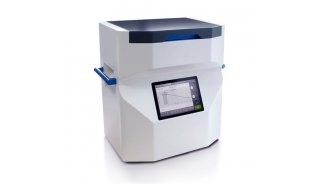Skeletal muscle hypertrophy is regulated via AKT/mTOR pathway

Skeletal muscle atrophies with disuse while with increased use and increased load skeletal muscle exhibits hypertrophy, with an increase in the size of existing muscle fibers. One signaling pathway involved in regulating skeletal muscle atrophy and hypertrophy is the AKT/mTOR pathway (see mTOR pathway). The mTOR pathway activity increases in response to muscle activity during hypertrophy and decreases in activity during atrophy. Blocking this pathway genetically or with the mTOR inhibitor rapamycin blocks hypertrophy and genetic activation of the pathway induces hypertrophy. One agent that promotes muscle hypertrophy is the growth factor IGF-1. IGF-1 activates AKT, GSK-3beta and mTOR to promote hypertrophy. In contrast, the calcineurin pathway is not involved in hypertrophy and is down-regulated by agents such as IGF-1 that promote hypertrophy. Calcineurin may modulate other aspects of muscle function such as the development of slow muscle fibers through transcriptional regulation. These pathways lead to regulation of protein translation, with increased translation apparently acting as a key regulatory point in skeletal muscle hypertrophy. Agents such as IGF-1 that stimulate skeletal muscle hypertrophy may provide treatments for muscle atrophy and wasting.
Contributor:
REFERENCES: Bodine, Sue C., et al. Akt/mTOR pathway is a crucial regulator of skeletal muscle hypertrophy and can prevent muscle atrophy in vivo. Nature Cell Biology, vol 3, November 2001, 1014-19. Chen, Jie. Mammalian signal transduction; regulation of translational initiation; cell cycle regulation; biochemistry and signaling pathway of mTOR/FRAP. October 2001. http://www.life.uiuc.edu/CSB/faculty/chem.html. Huang, Shile and Peter J. Houghton. Resistance to rapamycin: A novel anticancer drug. Cancer and Metastasis Reviews, vol 20, 2001, 69-78. Kim, Jae Eun and Jie Chen. Cytoplasmic-nuclear shuttling of FKBP12-rapamycin-associated protein is involved in rapamycin-sensitive signaling and translation initiation. PNAS, vol 97(26), December 2000, 14340-45. Kozma, Sara C. and George Thomas. Regulation of cell size in growth, development and human disease: PI3K, PKB and S6K. Bioessays, vol 24, 2002, 65-71. Rommel, Christian, et al. Mediation of IGF-1-induced skeletal myotube hypertrophy by PI(3)K/Akt/mTOR and PI(3)K/Akt/GSK3 pathways. Nature Cell Biology, vol 3, November 2001, 1009-13. Serrano AL, et al. Calcineurin controls nerve activity-dependent specification of slow skeletal muscle fibers but not muscle growth. PNAS, vol 98(23), 2001, 13108-13. Wu, H., et al. Activation of MEF2 by muscle activity is mediated through a calcineurin-dependent pathway. EMBO J., vol 20(22), 2001, 6414-23.




















